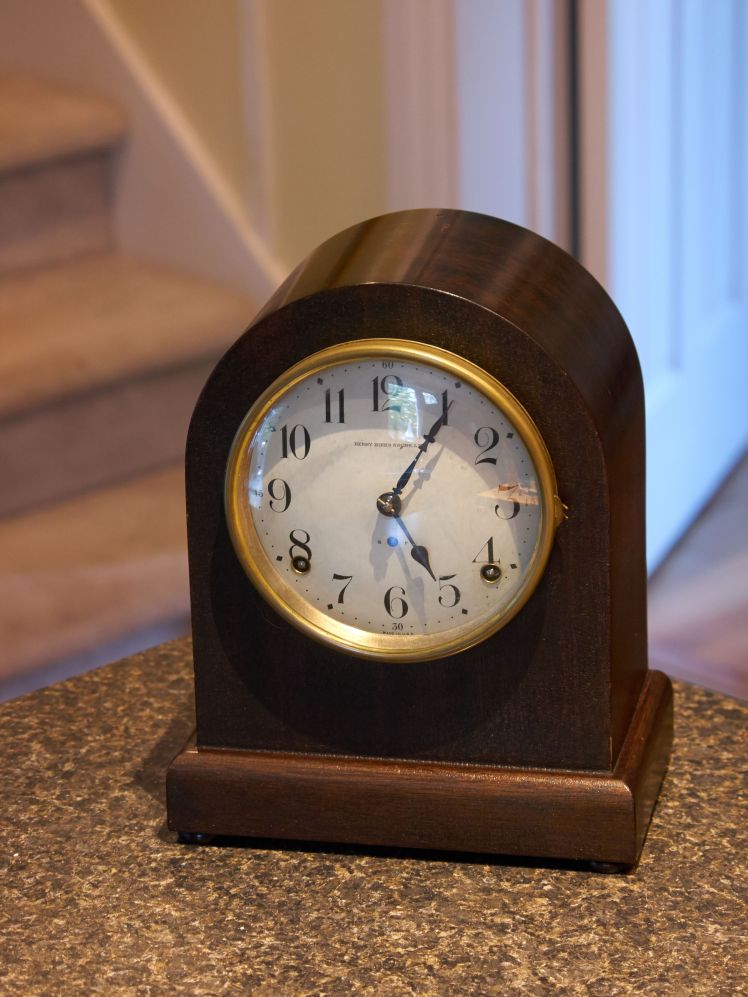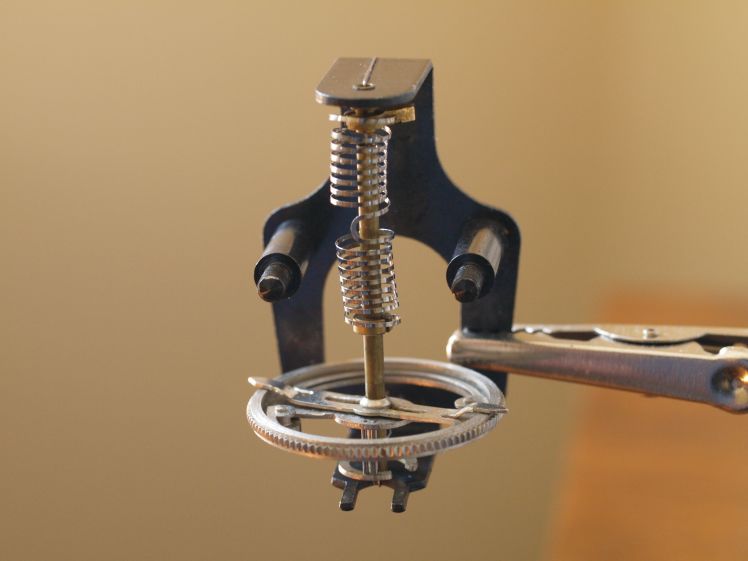
There are literally thousands of clock photos posted on the internet. Being an amateur photographer myself I marvel at the care and attention that some put into the actual capture of an image for all the world to see yet others feel that their cell phone is, well, good enough. It is frustrating to see blurry and out of focus pictures taken in poor light when you really want to see the detail they are attempting to describe. Specialized cameras do have distinct advantages when it comes to capturing the fine detail of a clock, watch etc. and I will explain why this is important.

For example I saw a bracket clock advertised in a local online for-sale site. The photos were terrible but I knew details about the clock the seller was advertising. Too bad most of the people viewing the ad saw a blurry photo lacking detail. I pounced on it. As it turned out I was the only one who inquired. The clock was in excellent condition and the movement looked like it “came off the showroom floor” and on top of that I managed to save quite a bit of money. Had the seller taken the time to photograph the item with care and attention they would have realized much more money for the clock.
I offer you tips on how to photograph your clock whether you are showing it off, selling it or if your interest is clock repair and maintenance.
My 7 tips for effective image capture.
1) Camera: Get a decent camera that will shoot macro. No matter what you might think of cell phones as cameras its not the resolution…its the lens. Some people swear by their cell phone – for decent photography I would be swearing at it!
I use a 9 year old Olympus E330 DSLR with an equally old 50mm macro lens. Another option is to uses a set of magnifier lenses that will screw onto standard lenses which will take macro to the extreme. Some bridge cameras will do just fine and they are not all that expensive.
How about the other end of the spectrum when it would be good to have everything in focus using F22, long exposure on a tripod with indirect natural lighting. Taking pictures of a clock movement before dis-assembly is a real challenge. Pointing the camera into the chasm between the plates with all the parts and hoping to get something usable upon re-assembly sometimes works and sometimes doesn’t but it helps if everything is in focus. Using a telephoto or zoom lens as a macro also helps if a macro is unavailable. Just step back far enough to take the shot.
The newest Panasonic ILC (interchangeable Lens Camera) cameras have an interesting feature in their latest firmware update which allows post capture re-focusing that I think would be a boon to horologists. What happens essentially is that it is a focus bracketing function that stacks a burst of images together into a single file and you touch the focus point that you prefer. Great for that side shot of the internal workings of a movement. You can then shoot 30 frames per second with 30 different focus points. I might be looking for this feature in my next camera purchase.

2) Stability: Find a tripod at a garage sale or get your old one out of the closet or at the very least put the camera on a pile of steady books. I have a sturdy Manfrotto tripod that is probably 12 years old but works very well. A tripod is a must particularly when low shutter speeds are used and it is even more important when shooting video.
3) Light: Be conscious of the light on your subject. Turning your clock around to a window in the daytime with the sun shining in will mean nice natural colors. In a dark room a flash on your camera is helpful but flashes tend to bounce light off shiny surfaces resulting in harsh images, so, indirect light is better. I use a CFL continuous lighting kit and if I need less harsh light I use a soft-box. For proper colour tones, shoot your photos in RAW and post-process for colour temperature correction.
4) Distractions: Be mindful of what else in in the shot. Your favorite clock with your equally favorite brew may not leave the best impression for some. Clear the area around the object prior to shooting or use a back-drop. A white bed-sheet will do in a pinch. In the shot below I eliminated any distractions by using a macro lens to blur the background.

5) Cropping: This related to # 4). Crop out any distractions or crop for more impact. Sometimes we don’t need to see everything, crop out what is not needed.
6) Composition; the ability to make things stand out in your photo in a particular way. Using a large aperture on your lens can result in a particular part of a clock stand out in focus while everything else is blurred. The camera sees everything which means your photo can be cluttered. Take some objects out of the photo and consider a focal point, something that naturally draws the eye.
7) Re-size: Re-size for the web. Re-sized photos retain much of the same quality as the original but are easy to upload and serve to protect your copyright.
Got any tips you can share? Leave your comments

You must be logged in to post a comment.